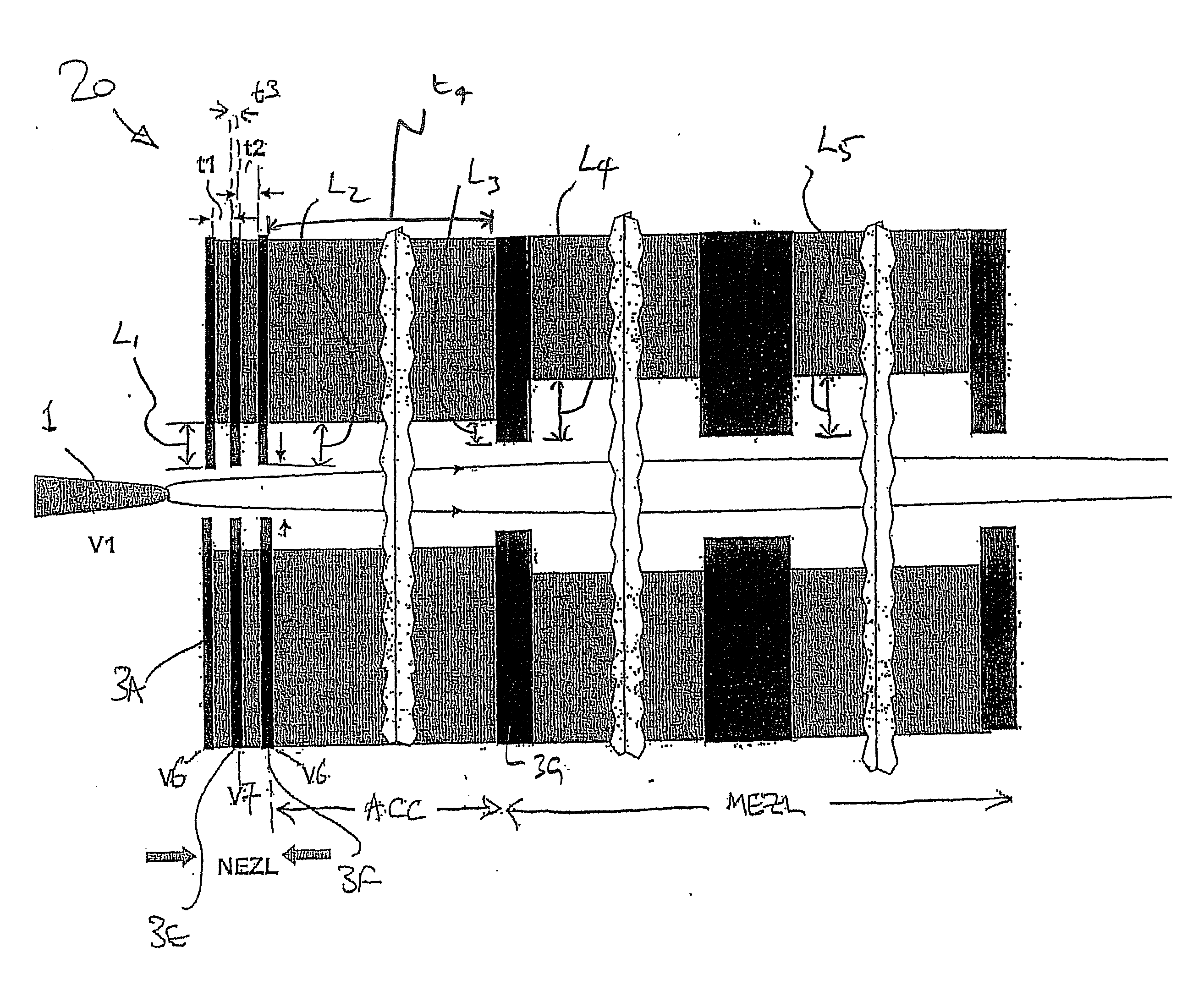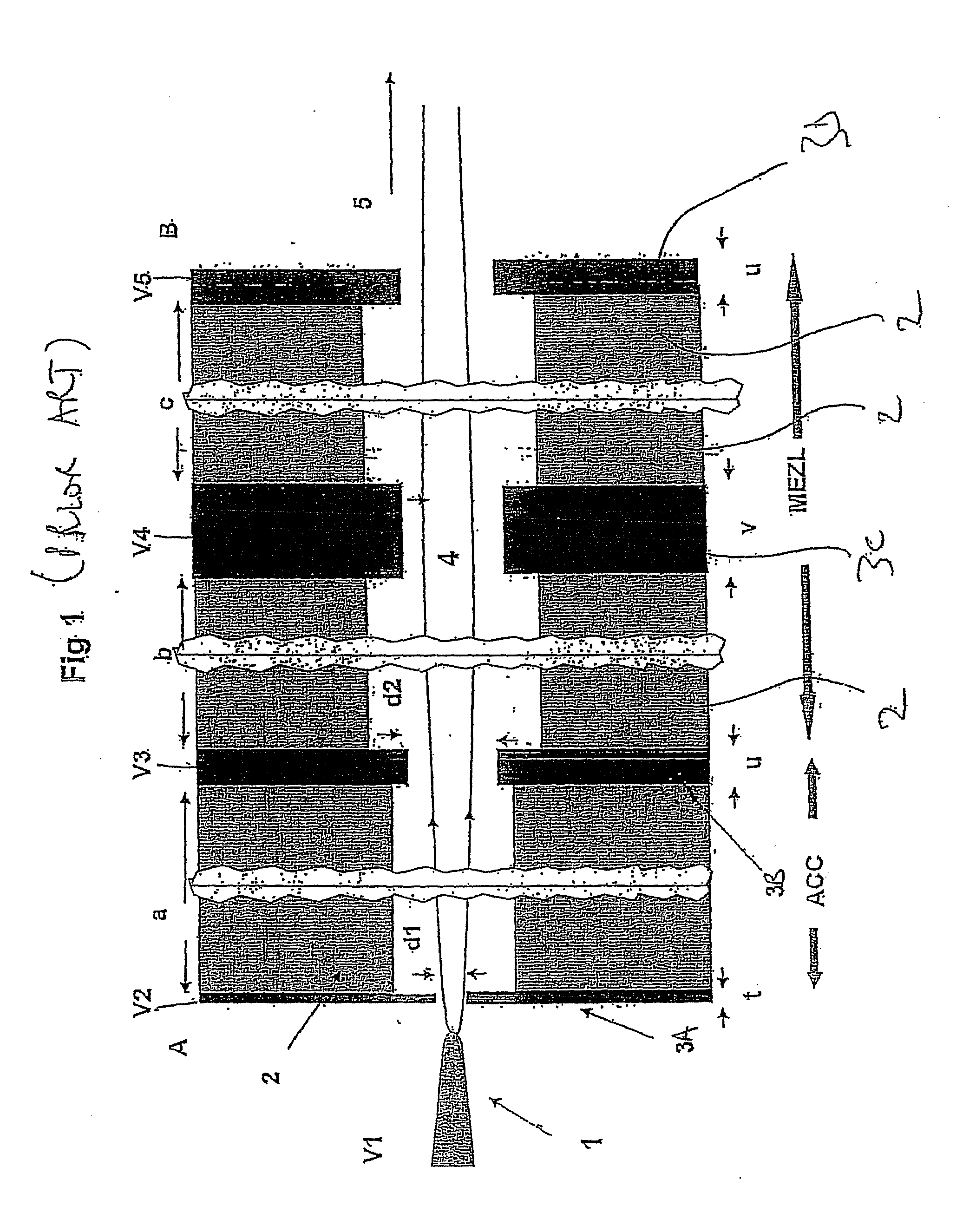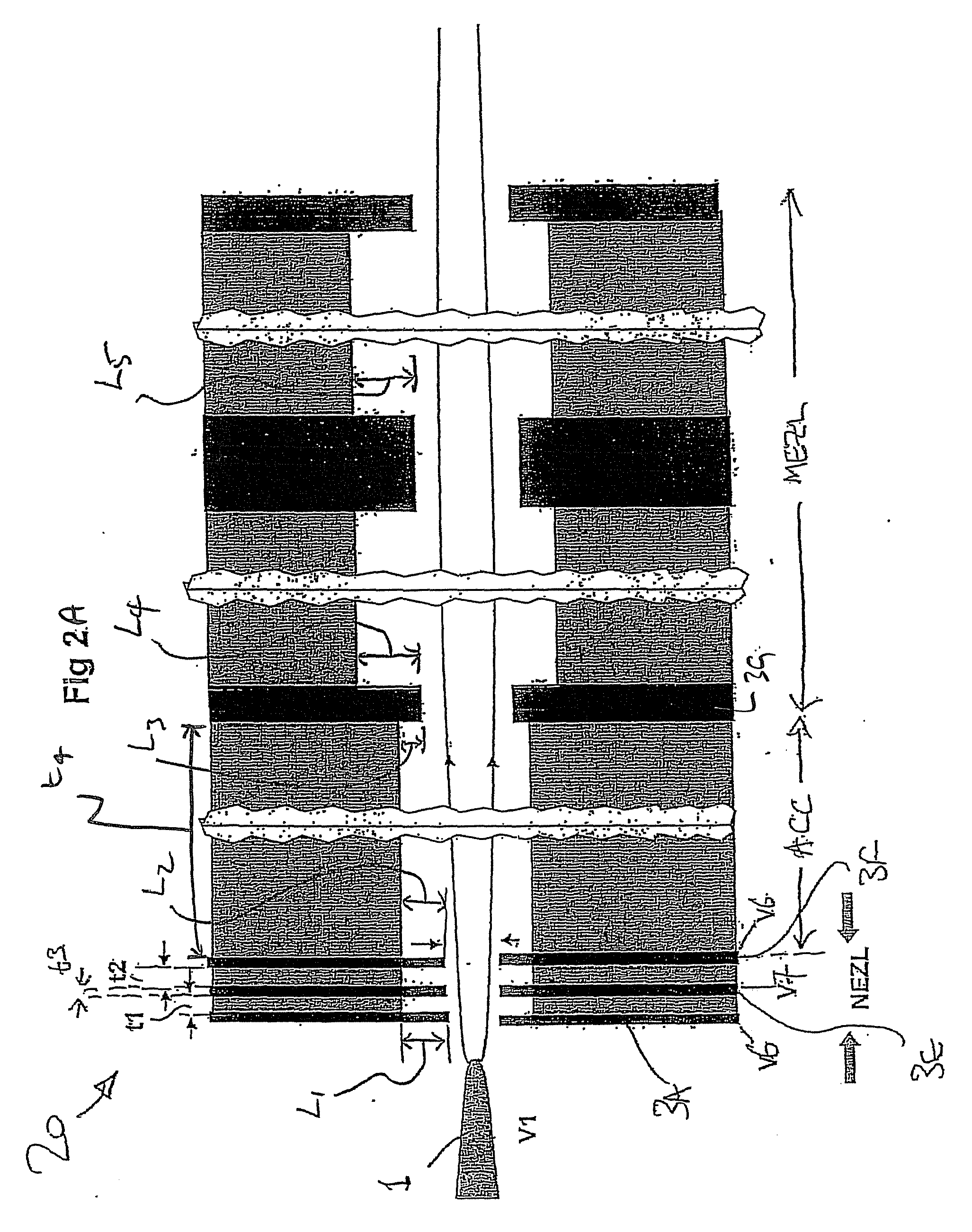Improved particle beam generator
a generator and particle technology, applied in the direction of beam deviation/focusing by electric/magnetic means, instruments, mass spectrometers, etc., can solve the problem that the design cannot be optimum for a particular energy, and achieve the effect of reducing or substantially eliminating the buildup of charge on one or more of the electrodes
- Summary
- Abstract
- Description
- Claims
- Application Information
AI Technical Summary
Benefits of technology
Problems solved by technology
Method used
Image
Examples
Embodiment Construction
[0059]Referring firstly to FIG. 2, there is shown a particle beam generator 20 comprising a nano-scale Einzel lens structure NEZL, accelerating means ACC and a more standard Einzel lens structure MEZL. The NEZL section is disposed immediately adjacent the particle source or nanotip 1 as shown in FIG. 2. The NEZL section has a total thickness typically less than 200 nm so that the beam does not expand significantly. The aperture in each of the electrodes is typically around 50 nm and the voltage, V7, can be adjusted in the range from −50 to +50 Volts when the thickness of the insulators t1 and t2, is 50 nm for electrodes of similar thickness t3, which is ideally between 10-60 nm. Altering this voltage, V7, changes the beam divergence or convergence into the subsequent accelerator and microscale einzel lens (MEZL) sections of the device and so it is possible to constrain the exiting particle beam to have the same properties irrespective of the overall particle energy. In some embodime...
PUM
 Login to View More
Login to View More Abstract
Description
Claims
Application Information
 Login to View More
Login to View More - R&D
- Intellectual Property
- Life Sciences
- Materials
- Tech Scout
- Unparalleled Data Quality
- Higher Quality Content
- 60% Fewer Hallucinations
Browse by: Latest US Patents, China's latest patents, Technical Efficacy Thesaurus, Application Domain, Technology Topic, Popular Technical Reports.
© 2025 PatSnap. All rights reserved.Legal|Privacy policy|Modern Slavery Act Transparency Statement|Sitemap|About US| Contact US: help@patsnap.com



